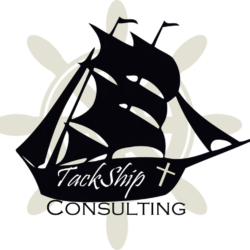Q – What is Executive Coaching?
Executive Coaching is a relationship between two people, who have come together in a trusting, vulnerable way, to support the goals and objectives of the Client. As with many relationships, there is a transactional nature, which includes the exchange of money for service, but also this relationship is at a more intimate and personal level, which is the foundation for successful coaching. It is also important to note, that the beneficiary and focus of the relationship is on the client, not on the coach. The power that is put into the relationship from both parties is ultimately focused back onto the performance outcomes of the client. People are naturally creative, resourceful, and whole and coaching motivates them to improve their character and performance. The coach helps the client to realize their inner fire, leads the client toward a more optimal way of living, in the context of their personal and professional settings. The coaching focuses not only on the client’s problem of the moment, but on their entire being. The client will understand past experiences, and how those may have affected their current perspective on life and their own capabilities. The coach seeks to understand the client’s current situation, to facilitate the client’s drive and creativity to move toward improved performance in the desired areas.
Q – What is an Executive Coach?
The executive coach or coach is provided from TackShip, and is a person with specific training, certification, and competence in executive coaching, as well as professional experience and resources to help a client frame their needs and plans. This person facilitates the engagement with the client. The coach’s role is NOT to do for the client, to fix the client, or to direct the client. The coach must create space for the client to feel comfortable and vulnerable about where they are and what they are feeling.
Q – What is the Engagement?
The engagement is a relationship between a coach, client, and potentially a sponsor. The engagement is negotiated prior to its commencement, and the parties will agree to the terms, duration, frequency, and reporting of the engagement.
Q – How does a coaching engagement work?
A coaching engagement starts with a meeting between either a client or sponsor to coordinate a coaching plan, including duration, frequency, and goals. The coaching process begins when the coach and client start meeting. For the initial meeting, some pre-work may be given to the client, including assessments or worksheets to help the client define the direction they are looking to go with the coaching process. The coach and client will meet with each other for the proscribed timeframe and frequency and work on improving the client’s performance through development of character, setting of goals and developmental action plan, and monitoring of progress.
Q – Who is the Client?
The client is the focus of the coaching engagement. The client is the person who the coach will work with to identify areas to improve their character, help identify goals and next steps, to get the client to grow. The client is responsible for the action in the relationship and must own the outcomes of the process.
Q – How is a coach engaged to work? What is the coaching contract?
While coaching is typically focused on the need of the client, often the client’s organization will sponsor the coaching engagement. The sponsorship of the coaching engagement adds a certain complexity to an engagement, as another vested stakeholder has been added to the mix. For any coaching, all interactions between the client and the coach are considered confidential, yet some information may be required to be reported to the organization, this is always discussed with the client prior to disclosure. Results of the coaching session may be shared with the sponsor, such as goals and developmental action plans. Because each engagement is unique specifics to the engagement are outlined in the coaching agreement and signed by the interested parties. This includes items like schedule, frequency, confidentiality, fees, etc.
Q – Who are considered stakeholders?
The stakeholders may include a number of people surrounding or with interest in the development of the client. These people may include direct reports and peers within the organization as well as managers, leadership, internal customers, and those in a matrix relationship.
Q – Sponsor and Stakeholder participation
Coaching is a private matter to help the client improve performance, correct behavior, or work on goals which will increase promotability. The sponsor and other stakeholder are vested in the success of the client, and therefore are an integral part of the process. Predominantly, the sponsor and stakeholders may be interviewed or perform assessments regarding the client, and these can be used for directing the coaching. The initial output of the coaching can also be a development action plan, which is another place where the sponsor and stakeholders can support the client’s growth.
Q – How does the coaching relationship begin?
The goal of your coach is to create a partnership based on the client’s success. The coach’s goal is to create an environment of trust based on empathy, confidentiality guidelines, and the creation of a space where the client can feel comfortable sharing their feelings, wants, and desires. The coach will demonstrate honesty and truth, while also exhibiting caring and grace for the client. The coach will use his training, professional experience, and command of the process to help the client optimize their performance. Both parties in the relationship need to evaluate the relationship and ensure that they can create this foundation, for the experience to be successful. Initial meetings will start with introductions and discussion to understand the current state and the desired end state. Through further discussion goals and issues will be established, and strategies developed to move toward the desired end state.
Q – Who decides what the goals are?
While the coaching relationship is primarily between the coach and the client, the sponsor often has expectation of what needs to be “fixed” through coaching. The coach will hold the perspectives, and work with the client to evolve goals from the coaching sessions. As the process evolves, specific development areas and actionable goals emerge that can be shaped into an action plan. The plan will be adaptable to further goal evolution, different perspectives, of client, coach, sponsors, and stakeholders, and often will come in stages.
- Initial Felt Needs of the sponsor and client are documented
- Negotiated Goals are then developed with a better articulation of the coaching process
- Designed Objectives are further refined, through assessments, and further conversations. They are aspirational and optimistic, providing a positive vision of the future. These objectives can also be supported by action idea documented in a development action plan that can be shared with the sponsors.
Q – What types of assessments do you use?
Assessments are used to collect quantitative and/or qualitative data on the environment that the client operates within. Quantitative data can be provided from certain assessments which score different aspects of a client’s responses to produce specific results. The MBTI, is a classic example of an assessment to describe communication preference idicators. Other assessments such as Clifton StrenghtsFinder, Townsend Personal and Relational Assessment Tool (TPRAT) or Emotional Intelligence 2.0 can provide other insights into the client’s capabilities and strengths. 360-degree feedback assessments could also be used, and often are implemented in companies. Qualitative data can come from shadowing of the client and observation of how they react and how others react to them, as well as informational interviewing of the client’s colleagues.
Q – What kind of feedback will I get from these assessments?
For the quantitiatve self-assessments, results can be fairly immediate, and often times are delivered with interpreted results. For example, the StrengthsFinder results will provide your top 5 strengths and a description of how those strengths might work together. These interviews and/or 360-degree feedback assessments are often kept confidential, and only summarized results provided to the client. Regardless of the feedback, it will be provided, but also will predominantly be used to create Designed Objectives that will help the client to move into a better state of performance.
Q – What does the Development Plan look like? How is that created?
There are three key milestones represented in the Development Plan:
- It marks transition from discovery to implementation
- Bridges the private and public elements of coaching
- Links today’s developmental actions with future aspirations
The designed objectives that have evolved out of the felt needs and negotiated goals, are the headlines of the development plan, and action steps, developed and bought into by the client form a committed and motivated basis toward change. Once the plan is drafted it may be presented to the appropriate stakeholders (sponsor, HR, manager, etc.) and any last inputs are integrated into a final plan.
Q – What is the difference between coaching and consulting?
As a coach, the focus of the engagement is all about helping the client improve their performance, relationships, and themselves. Coaching will provide a confidential, space to discuss areas of improvement, develop goals, provide accountability, and help the client to work on identified personal and professional issues. Consulting services are different, because the hired person is engaged to provide services to the company, such as strategic planning, specific area expertise, or additional labor.

